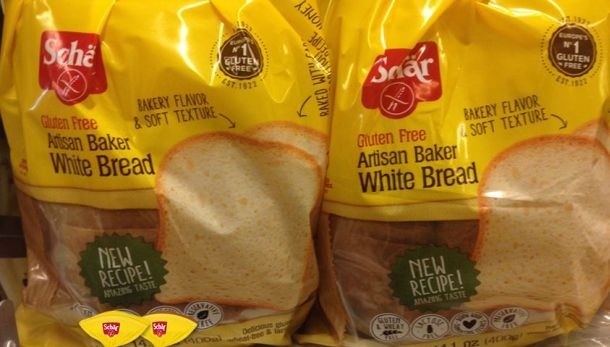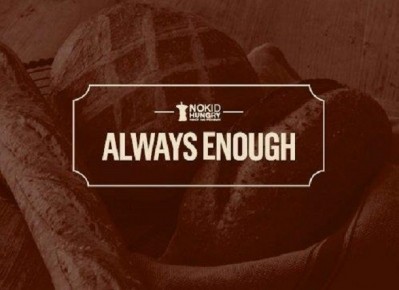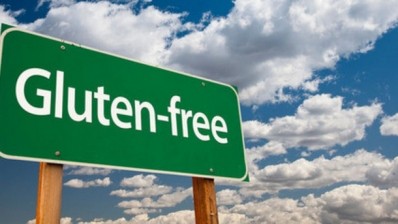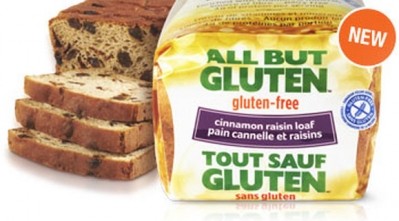60-second interview: Robert Cruz, director marketing, Dr Schär USA Inc
Where next for gluten-free, and what’s the real size of the prize?

FNU: How has the gluten-free market evolved in the US?
RC: This is clearly not a fad. However, nothing can grow at 70-90% YoY forever, and the growth levels are now in the mid-teens. There’s also been a lot of consolidation.
FNU: What are your revenues in the US? And what’s driving your growth?
RC: Our wholesale revenues are in the 20s ($millions), although we don’t share exact figures. In the first few years, we were in a big distribution drive, but now that we’re more widely available, it’s all about velocity, dollars per point of distribution. However, there are still lots more opportunities for increasing distribution, as the ACV for our most widely available products is in the 40s and our ultimate goal is 100% distribution in all relevant channels.
FNU: Where do you see the biggest growth opportunities, and are you planning to expand your portfolio this year?
RC: We have 300+ products in Europe and about 50 over here, so obviously we will take more products from Europe that we think will work in the US, but our focus right now is really driving velocity of products such as the Artisan Baker loaves. We’re also updating the packaging across our entire US product range.
FNU: We’ve seen estimates of the US gluten-free market at retail vary from $500m to $10-15bn depending on how it is defined. How big do you think the market is?
RC: I think you have to look at the core market where products are specifically formulated without gluten, rather than counting everything with a gluten-free label on it - we’ve even seen gluten-free water on sale – so we think the market is in the 100s of millions, not the billions. We’re focused on bread and baked goods, baking mixes, pasta, pasta-based entrees, and pizza.
FNU: What is distinctive about Schär’s new artisan bread line?
RC: In the sourdough white bread we’re using state of the art technology and ancient grains such as millet and quinoa that are on trend, nutritious and delicious, along with honey; while in the sourdough multigrain loaf we use millet, buckwheat, quinoa, sunflower seeds, flax seeds, and honey. While most other gluten-free breads are merchandised in the freezer section, or supplied frozen and then defrosted by retailers and put in the ambient bakery section, our products are never frozen. They are supplied at ambient temperature and have a four-month shelf life, but no preservatives, because we’re using high-tech packaging technology. It’s a huge differentiator in the business.
FNU: What is distinctive about Schär vs rivals in the gluten-free market?
RC: I’m really proud to work here because we have such a deep understanding both about celiac disease and gluten sensitivity, and how to make gluten-free products [Dr Schär has more than three decades of experience in developing gluten-free products]. Our director of nutritional services has a PhD from Columbia University, but is also a celiac.
FNU: Boulder Brands said a while back that drug, club and foodservice were the next big opportunities in gluten-free. Do you agree?
RC: Right now we’re focused on conventional grocery and natural and specialty stores, but we see tremendous opportunities in ‘up and down the street’ channels. As for foodservice, that’s going to be important over the next five years, but right now we don’t have the infrastructure to support that. We’re also investigating opportunities in the club channel.
FNU: Where is the best place to merchandise gluten-free products?
RC: Merchandising strategies vary, but to start with you’d see dedicated gluten-free sections of anything from four to 24 feet, but that has evolved, and what we’re seeing now, is that more retailers are integrating these products into their respective categories, so gluten-free pasta is now in the main pasta aisle, for example, which gives you access to a broader range of consumers.
FNU: Who is your target consumer, and how does that influence how you position and market your products?
RC: Our core consumer is the celiac [less than 1% of Americans] and gluten sensitive community [estimates vary from 0-6%], but if you look at household penetration of gluten free products it’s a lot higher [than the number of people with an intolerance].
FNU: What’s the best way to spend marketing dollars in the gluten-free market?
RC: In terms of media spending, we do a lot of work with specialist print titles that reach celiacs and gluten sensitive consumers, and we also have a growing database of consumers in an affinity club that we engage with via coupons, free samples, newsletters and so on. In Europe, we’re doing TV advertising, but here there are more efficient ways to allocate media spend to reach our target consumers. While we know our products are consumed by consumers interested in a healthy lifestyle, our marketing dollars are focused on heavy users – celiacs and people with gluten sensitivity.










